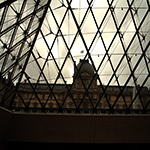Euroacademia Conferences
 Europe Inside-Out: Europe and Europeanness Exposed to Plural Observers (9th Edition) April 24 - 25, 2020
Europe Inside-Out: Europe and Europeanness Exposed to Plural Observers (9th Edition) April 24 - 25, 2020 Identities and Identifications: Politicized Uses of Collective Identities (9th Edition) June 12 - 13, 2020
Identities and Identifications: Politicized Uses of Collective Identities (9th Edition) June 12 - 13, 2020 8th Forum of Critical Studies: Asking Big Questions Again January 24 - 25, 2020
8th Forum of Critical Studies: Asking Big Questions Again January 24 - 25, 2020 Re-Inventing Eastern Europe (7th Edition) December 13 - 14, 2019
Re-Inventing Eastern Europe (7th Edition) December 13 - 14, 2019 The European Union and the Politicization of Europe (8th Edition) October 25 - 26, 2019
The European Union and the Politicization of Europe (8th Edition) October 25 - 26, 2019 Identities and Identifications: Politicized Uses of Collective Identities (8th Edition) June 28 - 29, 2019
Identities and Identifications: Politicized Uses of Collective Identities (8th Edition) June 28 - 29, 2019 The European Union and the Politicization of Europe (7th Edition) January 25 - 26, 2019
The European Union and the Politicization of Europe (7th Edition) January 25 - 26, 2019 7th Forum of Critical Studies: Asking Big Questions Again November 23 - 24, 2018
7th Forum of Critical Studies: Asking Big Questions Again November 23 - 24, 2018 Europe Inside-Out: Europe and Europeanness Exposed to Plural Observers (8th Edition) September 28 - 30, 2018
Europe Inside-Out: Europe and Europeanness Exposed to Plural Observers (8th Edition) September 28 - 30, 2018 Identities and Identifications: Politicized Uses of Collective Identities (7th Edition) June 14 - 15, 2018
Identities and Identifications: Politicized Uses of Collective Identities (7th Edition) June 14 - 15, 2018
Seven Wonders of the World: How to Remember Destroyed Artworks
-
-

-
Presentation speakers
- Francesco Del Sole, Department of Cultural Heritage and Arts, University of Salento, Lecce, Italy
- Download presentation
Abstract:
This contribution tries to develop an interesting theme: the memory of an imagined artwork. The case in question, the seven wonders of the world, is the most famous because it explains how ancient (and destroyed) artworks have become an archetype that lives from antiquity to contemporary age. The reason of this success is present in the same definition of Wonder: Aristotle’s philosophy introduces this word, identified as a primordial feeling that is at the beginning of knowledge: man is amazed from the phenomenon and tries to understand his essence. Wonder is a philosophical word and then it will shift into scientific and artistic arenas. Rhetorical work De septem orbis spectaculis attributed to Filone da Bisanzio is important because it helps us understand that the Wonder is a gift of word, a concept that can be transmitted only by words (history and literature). Art cooperates with technology to become “wonderful” and “amazing” creating veritable masterpieces, first machines then art miracles. In this context, it’s necessary to explore wonder’s meaning and then examine the seven architectural wonders of the world and their critical role over the centuries. The fortune of these archetypes is created by their fundamental character: they live between legend and reality, utopia and architectural greatness. The “travel in the wonder” includes characters of the likes of Antonio Averlino, Francesco Colonna, Pirro Ligorio, Athanasius Kircher, J. B. Fischer Von Erlach, Le Corbusier, Wright and Albert Robida; through the analysis of these artists, it is possible to chart a course including reworded versions of the ancient archetype demonstrating how arts (figurative arts, literature and science) are a potent and evocative mean of past’s memory. The past is reinvented depending on needs of the moment. It can be amazing to note that contemporary projects are based on these images (archetypes) as ancient as legendary.
-
Related Presentations

Taxonomy of Engagements in Furnishing the City
- Thelma Lazo-Flores

















